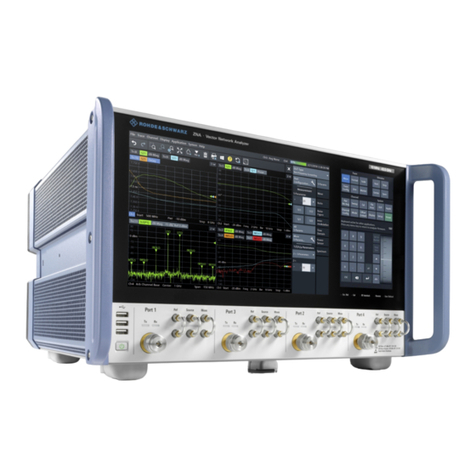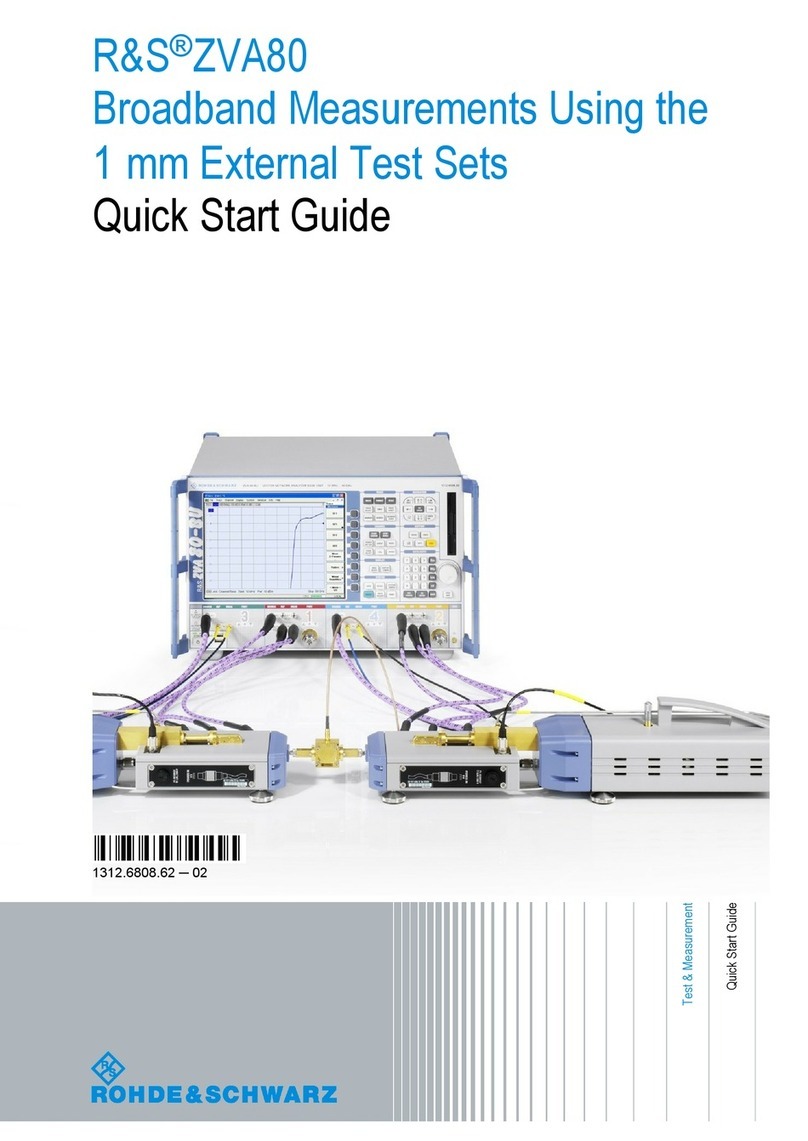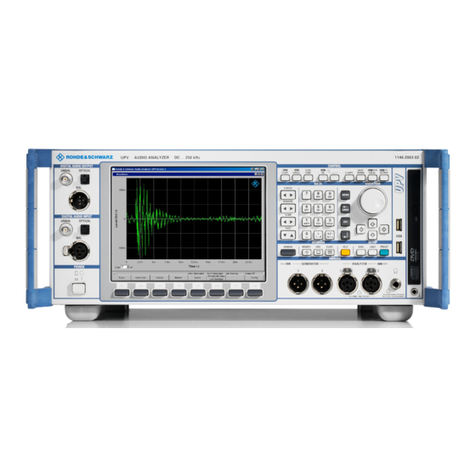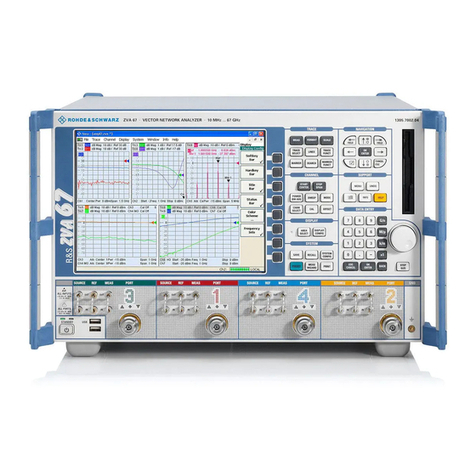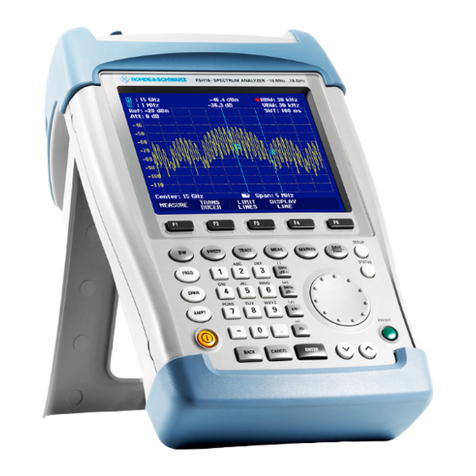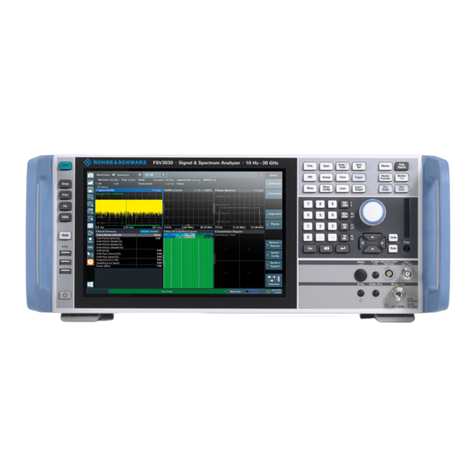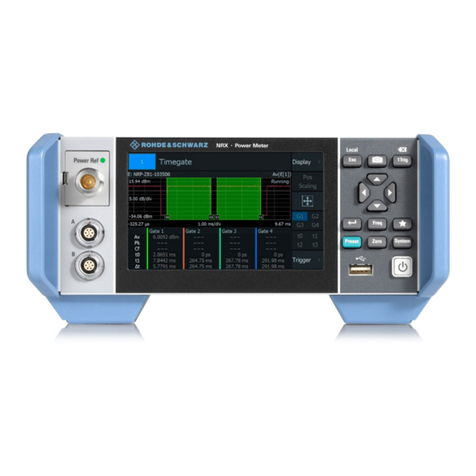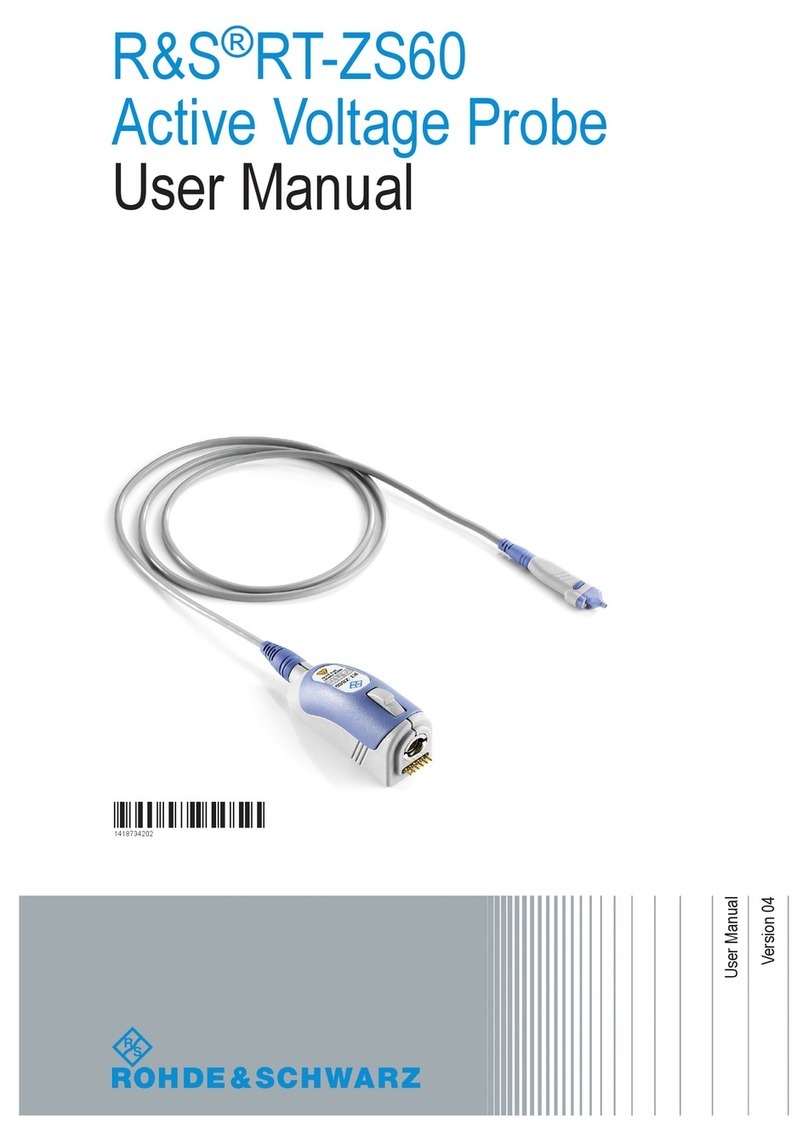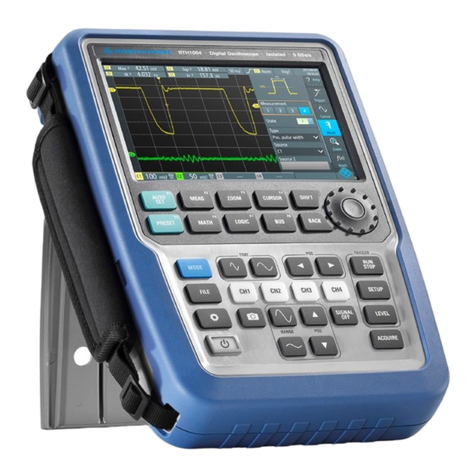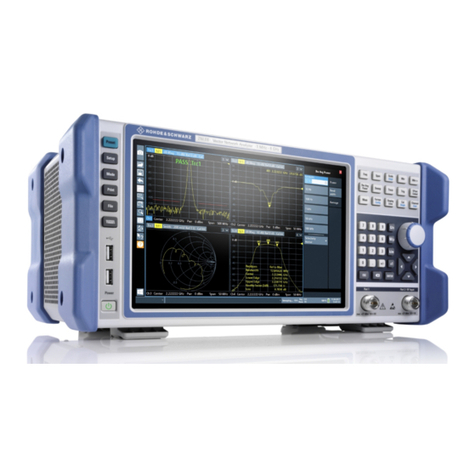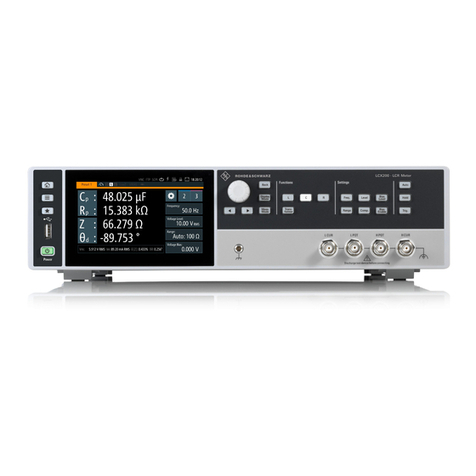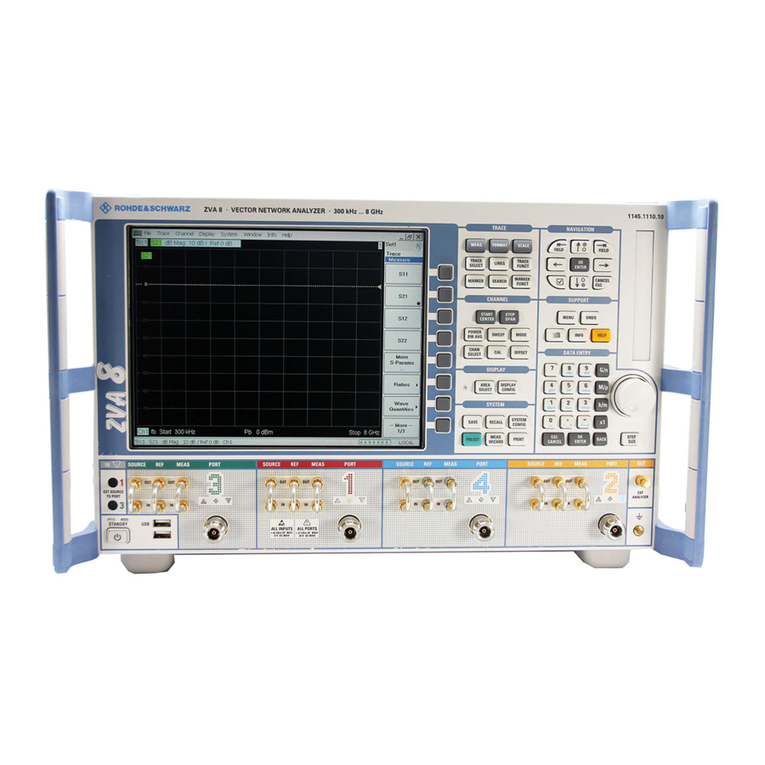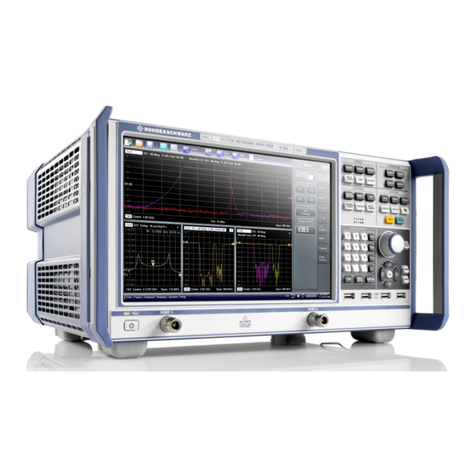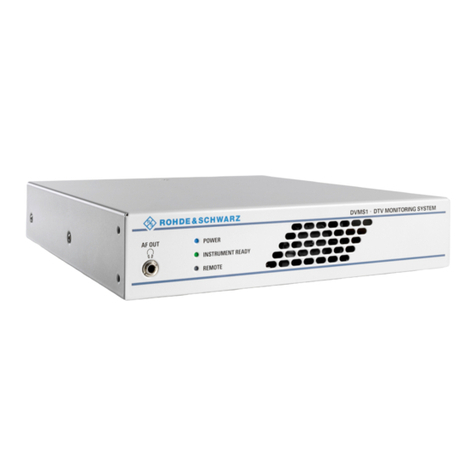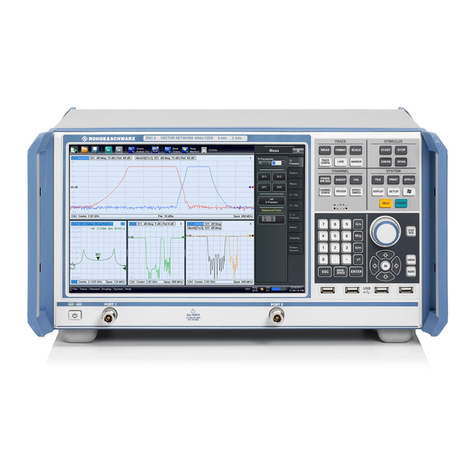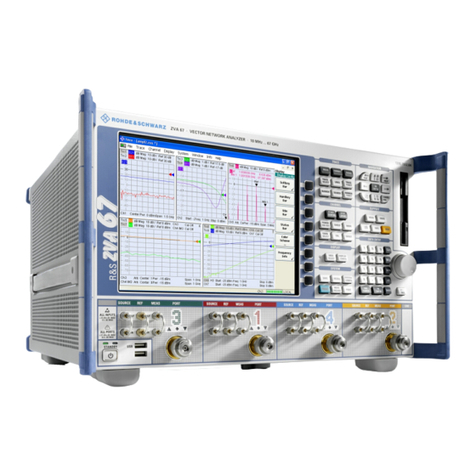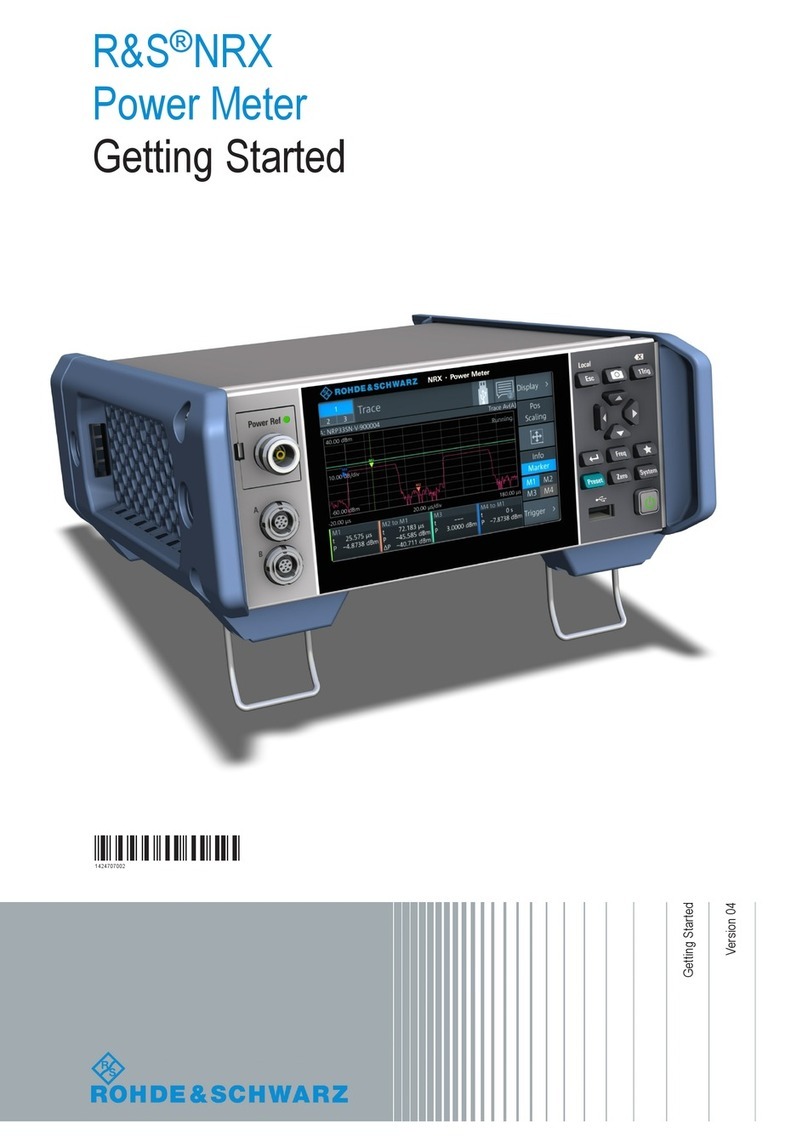
Types of Memory and Information Storage in the R&S FSV/A
R&S®FSVA3000 / R&S®FSV3000
7Instrument Security Procedures 1179.0097.02 ─ 01
4.2 Non-Volatile Memory
The R&S FSV/A contains no user-accessible non-volatile memory, except for the inter-
nal SSD memory module and the removable CFAST memory card (option R&S FSV3-
B20, removable hard drive).
All other non-volatile memories of the R&S FSV/A are not a security concern.
SSD Solid-State Drive (CPU board)
(excludes CFAST memory card R&S FSV3-B20, removable hard drive)
The internal SSD memory module is located on the CPU board.
Basically, the SSD holds user data and is non-volatile. Hence, user data is not erased
when power is removed from the instrument.
Note: As you can equip the R&S FSV/A with the option R&S FSV3-K33 (security write
protection of solid state drive), the R&S FSV/A allows you to enable the Secure User
Mode. The sanitization procedure depends on the availability of this option:
●If R&S FSV3-K33 is not available or Secure User Mode disabled (default setting
on the instrument):
The R&S FSV/A saves user data and instrument setups permanently on the SSD.
All data, including user data leaves the secure area with the instrument.
Sanitization procedure: Sanitizing is not possible without physically removing the
SSD.
●If R&S FSV3-K33 is available with Secure User Mode enabled:
The R&S FSV/A redirects user data and instrument setups to the volatile memory
(SDRAM).
Sanitization procedure: Turn of instrument power.
See also Chapter 5, "Instrument Declassification", on page 8.
Removable CFAST Memory Card (R&S FSV3-B20, removable hard drive)
(excludes SSD)
Do not remove the CFAST memory card during operation as data can get lost.
●If the CFAST memory card is inserted:
Note: As you can equip the R&S FSV/A with the option R&S FSV3-K33 (security
write protection of solid state drive), the R&S FSV/A allows you to enable the
Secure User Mode. The sanitization procedure depends on the availability of this
option:
– If R&S FSV3-K33 is not available or Secure User Mode disabled:
The CFAST memory card holds user data and is non-volatile. User data is not
erased when power is removed from the instrument.
Sanitization procedure: Remove the CFAST memory card from the instru-
ment.
Non-Volatile Memory













